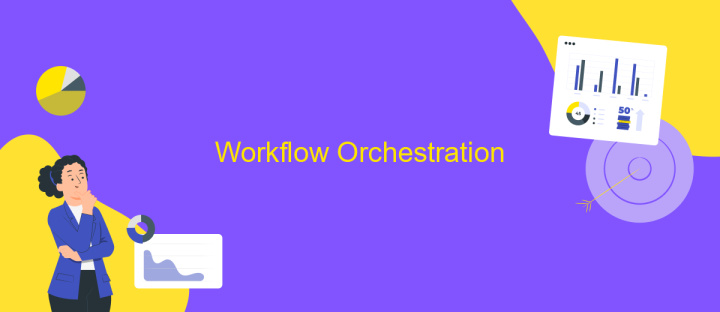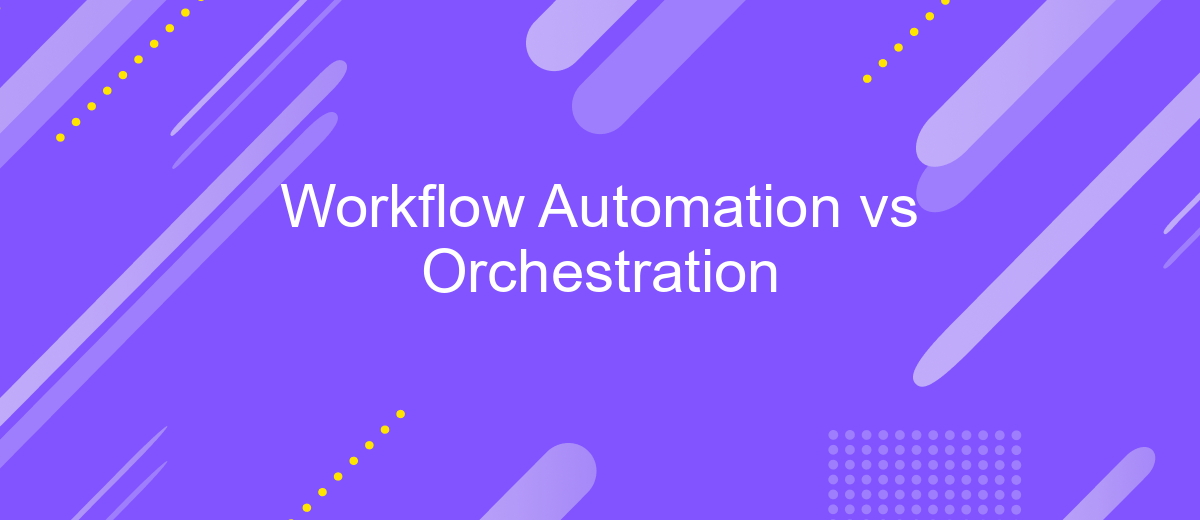Workflow Automation vs Orchestration
In today's fast-paced business environment, efficiency is paramount. Workflow automation and orchestration are two powerful strategies that can streamline operations and improve productivity. While both aim to optimize processes, they serve distinct roles. This article explores the key differences between workflow automation and orchestration, helping you understand which approach best suits your organization's needs.
Introduction
In today's fast-paced digital landscape, businesses constantly seek ways to optimize their processes and improve efficiency. Workflow automation and orchestration are two critical concepts that play a significant role in achieving these goals. While both aim to streamline operations, they differ in their approach and scope, often leading to confusion among professionals.
- Workflow Automation: Focuses on automating individual tasks within a process.
- Orchestration: Manages and coordinates multiple automated tasks across different systems.
- Integration Tools: Platforms like ApiX-Drive facilitate seamless integration between various applications and services.
Understanding the distinction between workflow automation and orchestration is crucial for businesses looking to enhance their operational efficiency. Workflow automation simplifies repetitive tasks, while orchestration ensures these tasks work harmoniously across different platforms. By leveraging integration tools such as ApiX-Drive, organizations can achieve a higher level of efficiency and agility, enabling them to stay competitive in an ever-evolving market.
Workflow Automation

Workflow automation refers to the use of technology to perform routine tasks and processes without human intervention. It aims to streamline operations, reduce manual errors, and improve efficiency by automating repetitive tasks. With workflow automation, businesses can set up predefined rules and triggers to execute tasks automatically, such as sending emails, updating records, or generating reports. This not only saves time but also ensures consistency and accuracy in the execution of processes.
One of the key aspects of workflow automation is the integration of various tools and services. For instance, platforms like ApiX-Drive facilitate seamless integration between different applications, enabling automated data transfer and synchronization. By leveraging such services, organizations can create a cohesive workflow that spans multiple systems, ensuring that information flows smoothly and tasks are completed without delays. As a result, businesses can focus on more strategic activities, knowing that their routine processes are handled efficiently by automation.
Workflow Orchestration

Workflow orchestration is a critical component in modern business operations, ensuring that various automated tasks and processes work seamlessly together. It involves coordinating and managing multiple workflows to achieve a specific outcome, often integrating different systems and applications to streamline operations. By orchestrating workflows, businesses can improve efficiency, reduce errors, and ensure that tasks are completed in the correct sequence.
- Define the workflow steps and sequence.
- Identify the systems and applications involved.
- Set up integration points using tools like ApiX-Drive.
- Monitor and manage the workflow execution.
- Analyze performance and optimize the workflow.
Using services like ApiX-Drive can significantly simplify the process of workflow orchestration. ApiX-Drive allows businesses to connect and automate various applications without requiring extensive coding knowledge. This makes it easier to set up and manage complex workflows, ensuring that all integrated systems communicate effectively. As a result, businesses can achieve greater operational efficiency and focus on strategic growth rather than manual process management.
Comparison of Workflow Automation and Orchestration

Workflow automation and orchestration, while often used interchangeably, have distinct differences. Workflow automation focuses on automating individual tasks within a specific process, streamlining repetitive actions to save time and reduce errors. Orchestration, on the other hand, coordinates multiple automated tasks across various systems, ensuring they work together seamlessly to achieve a larger objective.
One of the main differences lies in their scope. Workflow automation is typically limited to a single process or department, making it ideal for tasks like data entry or email responses. Orchestration, however, spans multiple processes and departments, integrating diverse systems and applications to achieve end-to-end automation.
- Scope: Workflow automation is process-specific, while orchestration is cross-functional.
- Complexity: Workflow automation handles simpler, repetitive tasks; orchestration manages complex, interconnected tasks.
- Integration: Orchestration often requires advanced tools like ApiX-Drive to integrate various systems effectively.
In summary, while workflow automation simplifies individual tasks within a process, orchestration ensures that these tasks are coordinated and integrated across multiple systems. Tools like ApiX-Drive can significantly enhance orchestration by providing seamless integration capabilities, making it easier to manage complex workflows across different platforms.
Conclusion
In summary, both workflow automation and orchestration play crucial roles in optimizing business processes. Workflow automation focuses on automating individual tasks to increase efficiency and reduce human error, while orchestration coordinates these automated tasks to work seamlessly together. Understanding the distinction between the two can help organizations implement the right strategies to achieve their operational goals.
For businesses looking to streamline their integrations and enhance automation, services like ApiX-Drive offer valuable solutions. ApiX-Drive enables seamless integration between various applications, ensuring that automated workflows are well-coordinated and efficient. By leveraging such tools, organizations can maximize the benefits of both workflow automation and orchestration, ultimately driving productivity and growth.
FAQ
What is the difference between workflow automation and orchestration?
When should I use workflow automation instead of orchestration?
Can both workflow automation and orchestration be used together?
What are the benefits of using orchestration over simple automation?
How can I implement workflow automation and orchestration in my organization?
Time is the most valuable resource in today's business realities. By eliminating the routine from work processes, you will get more opportunities to implement the most daring plans and ideas. Choose – you can continue to waste time, money and nerves on inefficient solutions, or you can use ApiX-Drive, automating work processes and achieving results with minimal investment of money, effort and human resources.

